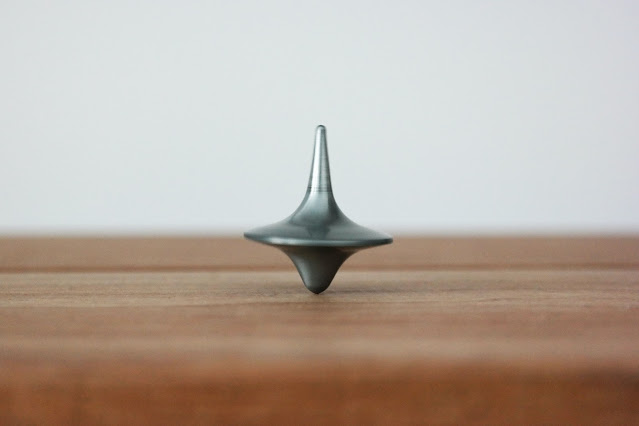 |
| They are a call to action to end poverty, protect the planet, and ensure that all people enjoy peace and prosperity by 2030. |
The Sustainable Development Goals (SDGs) are a set of 17 global goals established by the United Nations General Assembly in 2015. They are a call to action to end poverty, protect the planet, and ensure that all people enjoy peace and prosperity by 2030.
The 17 SDGs cover a wide range of interconnected issues, including ending poverty and hunger, improving access to healthcare and education, promoting gender equality and reducing inequality, and protecting the environment and biodiversity. The goals are designed to be universal, meaning they apply to all countries, regardless of their level of development.
The SDGs build on the successes of the previous Millennium Development Goals (MDGs), but also include new areas such as climate change, economic inequality, innovation, sustainable consumption, and peace and justice.
Achieving the SDGs requires the collective effort of governments, businesses, civil society organizations, and individuals around the world. Progress towards the goals is monitored and tracked through a set of indicators to ensure accountability and encourage action.
Goal!
The goal of the Sustainable Development Goals (SDGs) is to create a more sustainable and equitable world for everyone. The SDGs aim to address the interconnected challenges of poverty, inequality, environmental degradation, and climate change, and promote social, economic, and environmental progress.
The 17 SDGs cover a range of areas including ending poverty and hunger, improving access to healthcare and education, promoting gender equality and reducing inequality, and protecting the environment and biodiversity. The goals are designed to be universal and apply to all countries, regardless of their level of development.
Achieving the SDGs requires action and collaboration from governments, businesses, civil society organizations, and individuals around the world. The goals are ambitious and call for transformative change, such as transitioning to renewable energy sources, promoting sustainable consumption and production, and fostering innovation and technology transfer.
By 2030, the SDGs aim to achieve a world where everyone can live a healthy, prosperous, and dignified life within the boundaries of the planet's resources. The SDGs represent a shared vision and a call to action for a more sustainable and equitable future for all.
The 17 Sustainable Development Goals (SDGs) are:
- No Poverty - End poverty in all its forms everywhere.
- Zero Hunger - End hunger, achieve food security and improved nutrition and promote sustainable agriculture.
- Good Health and Well-being - Ensure healthy lives and promote well-being for all at all ages.
- Quality Education - Ensure inclusive and equitable quality education and promote lifelong learning opportunities for all.
- Gender Equality - Achieve gender equality and empower all women and girls.
- Clean Water and Sanitation - Ensure availability and sustainable management of water and sanitation for all.
- Affordable and Clean Energy - Ensure access to affordable, reliable, sustainable and modern energy for all.
- Decent Work and Economic Growth - Promote sustained, inclusive and sustainable economic growth, full and productive employment and decent work for all.
- Industry, Innovation and Infrastructure - Build resilient infrastructure, promote inclusive and sustainable industrialization and foster innovation.
- Reduced Inequalities - Reduce inequality within and among countries.
- Sustainable Cities and Communities - Make cities and human settlements inclusive, safe, resilient and sustainable.
- Responsible Consumption and Production - Ensure sustainable consumption and production patterns.
- Climate Action - Take urgent action to combat climate change and its impacts.
- Life Below Water - Conserve and sustainably use the oceans, seas and marine resources for sustainable development.
- Life On Land - Protect, restore and promote sustainable use of terrestrial ecosystems, sustainably manage forests, combat desertification, and halt and reverse land degradation and halt biodiversity loss.
- Peace, Justice and Strong Institutions - Promote peaceful and inclusive societies for sustainable development, provide access to justice for all and build effective, accountable and inclusive institutions at all levels.
- Partnerships for the Goals - Strengthen the means of implementation and revitalize the global partnership for sustainable development.
Each of the goals has specific targets and indicators to track progress and ensure accountability.
1. No Poverty
 |
| This goal seeks to ensure that everyone has access to basic resources and services, such as education, healthcare, food, and clean water. |
The Sustainable Development Goal of No Poverty aims to eradicate extreme poverty and reduce inequality for all people, regardless of their background or circumstances. This goal seeks to ensure that everyone has access to basic resources and services, such as education, healthcare, food, and clean water. It also aims to provide opportunities for economic growth and decent work, especially for those who are marginalized or disadvantaged. To achieve this goal, targeted interventions and policies must be put in place, such as social protection programs, improved access to financial services, and measures to reduce discrimination and inequality. By eradicating poverty, we can create a more just and sustainable world for all.
2. Zero Hunger
 |
| Aims to ensure that everyone has access to safe, nutritious, and sufficient food all year round. |
The Sustainable Development Goal of Zero Hunger aims to ensure that everyone has access to safe, nutritious, and sufficient food all year round. This goal recognizes that hunger and malnutrition are complex issues that require a multi-faceted approach to solve. It involves improving agricultural practices, increasing food production, promoting sustainable food systems, reducing food waste, and improving access to food for vulnerable populations. The Zero Hunger goal also recognizes the importance of addressing the root causes of hunger, such as poverty, inequality, and conflict. Achieving this goal will require collaboration among governments, international organizations, civil society, and the private sector to ensure that everyone has access to the food they need to live healthy and productive lives.
3. Good Health and Well-being
 |
| Ensure that everyone has access to quality healthcare and is able to live a healthy and fulfilling life. |
The Sustainable Development Goal of Good Health and Well-being aims to ensure that everyone has access to quality healthcare and is able to live a healthy and fulfilling life. This goal focuses on reducing maternal and child mortality, improving access to sexual and reproductive health services, combating communicable and non-communicable diseases, and promoting mental health and well-being. It also recognizes the importance of addressing social determinants of health, such as poverty, education, and gender equality. Achieving this goal requires a strong health system that is accessible, affordable, and effective for all, as well as investments in research and development, disease prevention, and health promotion. By prioritizing good health and well-being, we can create a more equitable and sustainable world for all.
4. Quality Education
 |
| Ensure that everyone has access to inclusive and equitable education that promotes lifelong learning opportunities. |
The Sustainable Development Goal of Quality Education aims to ensure that everyone has access to inclusive and equitable education that promotes lifelong learning opportunities. This goal recognizes that education is a fundamental human right and a powerful tool for promoting economic development, reducing inequality, and achieving sustainable development. Quality education should be accessible to all, regardless of their gender, ethnicity, income level, or other factors. It involves providing adequate resources and facilities, qualified teachers, and relevant and meaningful curriculum. This goal also emphasizes the importance of promoting skills development, including vocational and technical training, as well as digital literacy. Achieving this goal requires a collective effort from governments, civil society, and the private sector to ensure that education is prioritized and adequately funded, and that everyone has equal opportunities to learn and succeed.
5. Gender Quality
 |
| Ending violence and harmful practices. |
The Sustainable Development Goal of Gender Equality aims to eliminate all forms of discrimination against women and girls, and promote their empowerment and full participation in all aspects of society. This goal recognizes that gender inequality is a pervasive and systemic issue that hinders social and economic progress. Achieving gender equality requires addressing root causes such as social norms, cultural practices, and discrimination, as well as promoting women's access to education, healthcare, and economic opportunities. This goal also highlights the importance of ending violence and harmful practices against women and girls, as well as promoting their representation and leadership in decision-making at all levels. By ensuring gender equality, we can build a more just and sustainable world that benefits everyone.
6. Clean Water and Sanitation
 |
| Aims to ensure that everyone has access to safe and affordable drinking water and basic sanitation services. |
The Sustainable Development Goal of Clean Water and Sanitation aims to ensure that everyone has access to safe and affordable drinking water and basic sanitation services. This goal recognizes that access to clean water and sanitation is a fundamental human right and a key driver of social and economic development. It involves improving water quality, reducing water scarcity, increasing access to sanitation facilities, and promoting hygiene practices. This goal also highlights the importance of protecting and restoring water-related ecosystems and strengthening water governance systems. Achieving this goal requires a collaborative effort from governments, civil society, and the private sector to prioritize and invest in water and sanitation infrastructure, as well as promote sustainable water use and management practices. By ensuring access to clean water and sanitation, we can improve health outcomes, reduce poverty, and promote sustainable development.
7. Affordable and Clean Energy
 |
| Ensure universal access to reliable, sustainable, and modern energy sources that promote economic growth and development while reducing greenhouse gas emissions and mitigating the effects of climate change. |
The Sustainable Development Goal of Affordable and Clean Energy aims to ensure universal access to reliable, sustainable, and modern energy sources that promote economic growth and development while reducing greenhouse gas emissions and mitigating the effects of climate change. This goal recognizes that access to affordable and clean energy is a key driver of social and economic development and can contribute to poverty reduction and improved health outcomes. It involves increasing access to renewable energy sources such as solar, wind, and hydropower, promoting energy efficiency, and expanding energy infrastructure in developing countries. Achieving this goal requires a collaborative effort from governments, civil society, and the private sector to prioritize and invest in clean energy solutions, as well as promote sustainable energy policies and practices. By ensuring affordable and clean energy for all, we can promote sustainable development and mitigate the impact of climate change on the planet.
8. Decent Work and Economic Growth
 |
| Aims to promote inclusive and sustainable economic growth, full and productive employment, and decent work for all. |
The Sustainable Development Goal of Decent Work and Economic Growth aims to promote inclusive and sustainable economic growth, full and productive employment, and decent work for all. This goal recognizes that economic growth must be equitable and sustainable, and should prioritize the creation of quality jobs that provide fair wages, safe working conditions, and social protection. It involves promoting entrepreneurship, innovation, and investment in key economic sectors, as well as ensuring equal access to economic opportunities for all, regardless of gender, age, or other factors. This goal also emphasizes the importance of promoting responsible business practices and strengthening labor protections, including the elimination of forced labor, child labor, and human trafficking. Achieving this goal requires a collaborative effort from governments, civil society, and the private sector to create an enabling environment for economic growth and development, as well as ensure that the benefits of economic growth are shared equitably among all members of society.
9. Industry, Innovation and Infrastructure
 |
| Aims to build resilient infrastructure, promote sustainable industrialization, and foster innovation in all sectors of the economy. |
The Sustainable Development Goal of Industry, Innovation, and Infrastructure aims to build resilient infrastructure, promote sustainable industrialization, and foster innovation in all sectors of the economy. This goal recognizes that sustainable development requires modern and efficient infrastructure that can support economic growth, while reducing negative environmental impacts. It involves increasing investment in infrastructure, promoting sustainable industrial practices, and promoting innovation and technology development to drive economic growth and enhance productivity. This goal also emphasizes the importance of building inclusive and sustainable cities and communities, as well as promoting responsible consumption and production patterns. Achieving this goal requires a collaborative effort from governments, civil society, and the private sector to invest in sustainable infrastructure, promote sustainable industrialization, and foster innovation and technological advancement in all sectors of the economy.
10. Reduced Inequalities
 |
| Aims to reduce inequalities within and among countries by promoting social, economic, and political inclusion for all. |
The Sustainable Development Goal of Reduced Inequalities aims to reduce inequalities within and among countries by promoting social, economic, and political inclusion for all. This goal recognizes that inequality is a major barrier to sustainable development and can result in social unrest, political instability, and economic stagnation. It involves addressing the root causes of inequality, such as discrimination, marginalization, and exclusion, as well as promoting policies and practices that promote equal opportunities for all. This goal also emphasizes the importance of reducing disparities in income, wealth, and access to resources and services, as well as promoting social protection measures for the most vulnerable populations. Achieving this goal requires a collaborative effort from governments, civil society, and the private sector to promote inclusive and equitable policies and practices, as well as ensure that the benefits of development are shared equitably among all members of society.
11. Sustainable Cities and Communities
 |
| Aims to create sustainable, inclusive, and resilient cities and human settlements that promote economic, social, and environmental sustainability. |
The Sustainable Development Goal of Sustainable Cities and Communities aims to create sustainable, inclusive, and resilient cities and human settlements that promote economic, social, and environmental sustainability. This goal recognizes that urbanization is a major global trend, and that cities play a crucial role in achieving sustainable development. It involves promoting sustainable urban planning and management, increasing access to affordable and sustainable housing, improving public transport and mobility, and enhancing urban resilience to natural disasters and other shocks. This goal also emphasizes the importance of promoting social inclusion and cultural diversity, as well as ensuring equitable access to basic services and infrastructure for all urban residents. Achieving this goal requires a collaborative effort from governments, civil society, and the private sector to prioritize and invest in sustainable urban development, as well as engage local communities and stakeholders in the decision-making process.
12. Responsible Consumption and Production
 |
| Promote sustainable patterns of consumption and production that minimize negative environmental impacts and improve human well-being. |
The Sustainable Development Goal of Responsible Consumption and Production aims to promote sustainable patterns of consumption and production that minimize negative environmental impacts and improve human well-being. This goal recognizes that current levels of consumption and production are unsustainable and can lead to resource depletion, pollution, and climate change. It involves promoting sustainable lifestyles and consumption patterns, increasing resource efficiency and reducing waste, and promoting sustainable production practices that minimize negative environmental impacts. This goal also emphasizes the importance of promoting sustainable public procurement and sustainable business practices, as well as ensuring that consumers have access to reliable information about the environmental impacts of products and services. Achieving this goal requires a collaborative effort from governments, civil society, and the private sector to promote sustainable consumption and production practices, as well as create incentives and regulatory frameworks that encourage sustainable business practices and behavior.
13. Climate Action
 |
| Aims to take urgent action to combat climate change and its impacts. |
The Sustainable Development Goal of Climate Action aims to take urgent action to combat climate change and its impacts. This goal recognizes that climate change is a global threat that requires immediate and ambitious action to reduce greenhouse gas emissions and build resilience to the impacts of climate change. It involves promoting renewable energy, improving energy efficiency, and increasing carbon sequestration through sustainable land use and forest management practices. This goal also emphasizes the importance of promoting climate-smart agriculture, enhancing climate resilience in vulnerable communities, and mobilizing finance and investment to support climate action. Achieving this goal requires a collaborative effort from governments, civil society, and the private sector to take bold and ambitious action to reduce greenhouse gas emissions, adapt to the impacts of climate change, and promote sustainable development that is compatible with a low-carbon, climate-resilient future.
14. Life Below Water
 |
| Conserve and sustainably use the oceans, seas, and marine resources for sustainable development. |
The Sustainable Development Goal of Life Below Water aims to conserve and sustainably use the oceans, seas, and marine resources for sustainable development. This goal recognizes that the health of the world's oceans and marine ecosystems is critical for maintaining the health of the planet and ensuring the well-being of people and communities. It involves reducing marine pollution and marine debris, promoting sustainable fishing and aquaculture practices, protecting and restoring coastal ecosystems, and addressing the impacts of ocean acidification and sea level rise. This goal also emphasizes the importance of promoting ocean literacy and awareness, as well as engaging local communities and stakeholders in the conservation and sustainable use of marine resources. Achieving this goal requires a collaborative effort from governments, civil society, and the private sector to promote sustainable ocean governance, support the conservation and restoration of marine ecosystems, and promote sustainable use of marine resources.
15. Life On Land
 |
| Protect, restore, and promote the sustainable use of terrestrial ecosystems, forests, and biodiversity for sustainable development. |
The Sustainable Development Goal of Life On Land aims to protect, restore, and promote the sustainable use of terrestrial ecosystems, forests, and biodiversity for sustainable development. This goal recognizes that terrestrial ecosystems are essential for supporting human well-being, providing ecosystem services, and maintaining the health of the planet. It involves promoting sustainable land use and forest management practices, protecting and restoring ecosystems and biodiversity, combating desertification and land degradation, and addressing the impacts of invasive species and climate change on terrestrial ecosystems. This goal also emphasizes the importance of promoting sustainable agriculture and agroforestry practices, as well as engaging local communities and indigenous peoples in the conservation and sustainable use of terrestrial ecosystems. Achieving this goal requires a collaborative effort from governments, civil society, and the private sector to promote sustainable land use and forest management, protect and restore ecosystems and biodiversity, and promote sustainable development that is compatible with the conservation and sustainable use of terrestrial ecosystems.
16. Peace, Justice and Strong Institutions
 |
| To promote peaceful and inclusive societies, provide access to justice for all, and build effective, accountable, and transparent institutions at all levels. |
The Sustainable Development Goal of Peace, Justice and Strong Institutions aims to promote peaceful and inclusive societies, provide access to justice for all, and build effective, accountable, and transparent institutions at all levels. This goal recognizes that peace, justice, and strong institutions are essential for achieving sustainable development and ensuring that no one is left behind. It involves promoting rule of law and human rights, combating corruption and bribery, building effective and accountable institutions, and promoting access to justice and legal empowerment for all. This goal also emphasizes the importance of promoting inclusive and participatory decision-making processes, protecting fundamental freedoms and human rights, and promoting the rule of law at all levels. Achieving this goal requires a collaborative effort from governments, civil society, and the private sector to promote good governance, combat corruption, strengthen institutions, and promote access to justice for all.
17. Partnerships for the Goals
 |
| Aims to strengthen global partnerships for sustainable development, mobilize and share knowledge, expertise, technology, and financial resources, and promote a collaborative and multi-stakeholder approach to achieving the Sustainable Development Goals. |
The Sustainable Development Goal of Partnerships for the Goals aims to strengthen global partnerships for sustainable development, mobilize and share knowledge, expertise, technology, and financial resources, and promote a collaborative and multi-stakeholder approach to achieving the Sustainable Development Goals. This goal recognizes that achieving the SDGs requires a collective effort and a shared responsibility from governments, civil society, the private sector, and other stakeholders at all levels. It involves promoting international cooperation and partnerships, increasing the effectiveness of development assistance, promoting technology transfer and capacity building, and mobilizing domestic and international resources to support sustainable development. This goal also emphasizes the importance of promoting a multi-stakeholder approach to development, engaging civil society and other stakeholders in decision-making processes, and strengthening the role of the United Nations and other international organizations in supporting sustainable development. Achieving this goal requires a collaborative effort from all actors to strengthen partnerships, mobilize resources, and promote a coordinated and integrated approach to achieving the SDGs.
Conclusion
The Sustainable Development Goals (SDGs) are a set of 17 goals agreed upon by the United Nations in 2015 to be achieved by 2030. These goals are a call to action for all countries and stakeholders to work together to end poverty, protect the planet, and ensure that all people can enjoy peace and prosperity. The SDGs are interconnected and cover a wide range of issues, including poverty, hunger, health, education, gender equality, clean water and sanitation, affordable and clean energy, decent work and economic growth, industry, innovation and infrastructure, reduced inequalities, sustainable cities and communities, responsible consumption and production, climate action, life below water, life on land, peace, justice and strong institutions, and partnerships for the goals. Achieving the SDGs will require a collaborative effort from all actors, including governments, civil society, the private sector, and individuals, to address the complex challenges facing our world today. By working together to achieve the SDGs, we can build a more sustainable and equitable future for all.














































